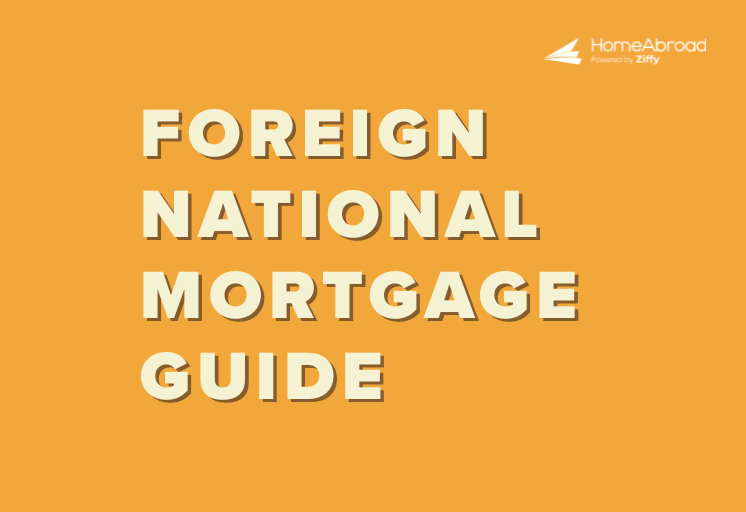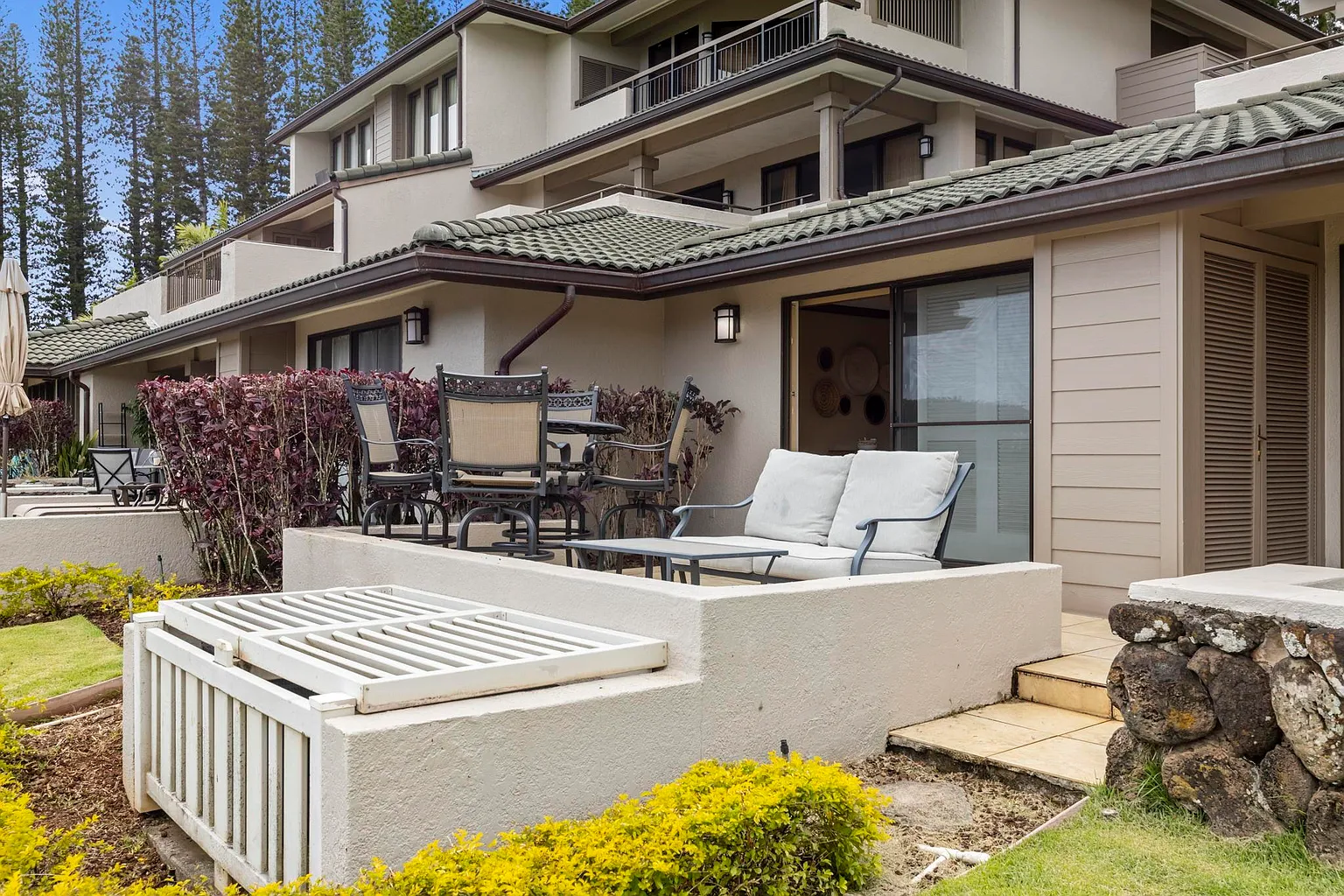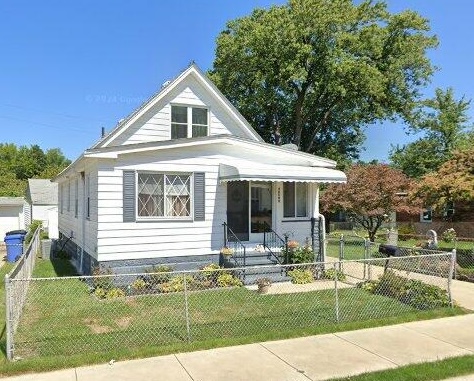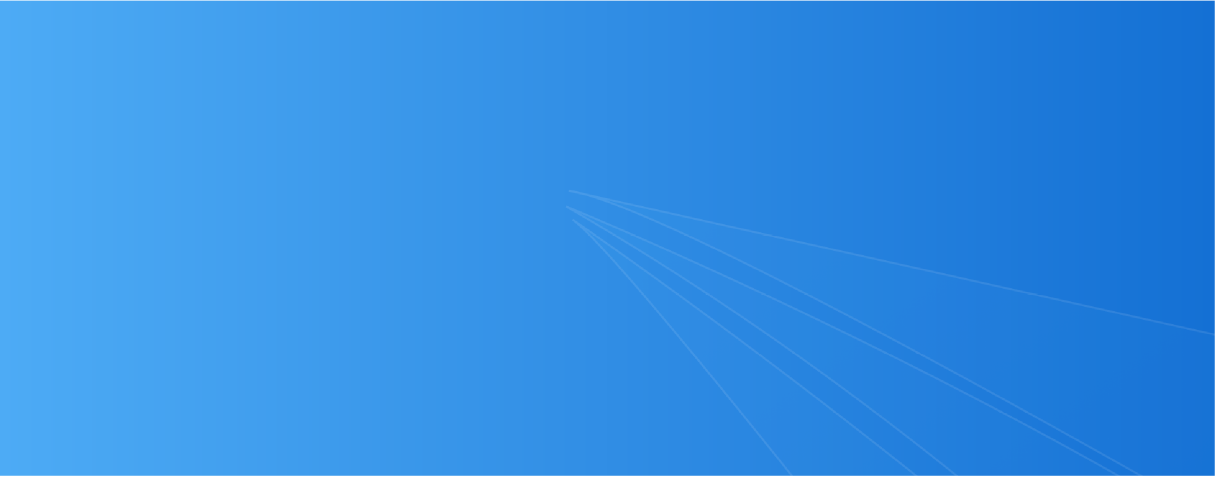Editorial Integrity
Making informed real estate decisions starts with having the right knowledge. At HomeAbroad, we offer US mortgage products for foreign nationals & investors and have a network of 500+ expert HomeAbroad real estate agents to provide the expertise you need. Our content is written by licensed mortgage experts and seasoned real estate agents who share insights from their experience, helping thousands like you. Our strict editorial process ensures you receive reliable and accurate information.
If you’re living in the US on a work permit, also known as an Employment Authorization Document (EAD), and dreaming of owning a home, it is certainly possible. Many EAD holders successfully secure mortgages and purchase homes every year.
Having worked with numerous investors on EADs over the years, I’ve seen firsthand how easily achievable this goal is. With the proper guidance and mortgage options, you can confidently navigate the home loan process and secure financing for your dream home.
This guide will walk you through the most suitable mortgage options available to EAD holders in the US. But first, for those who may not be familiar with it, let’s take a quick look at what an Employment Authorization Card is and why it plays a key role in qualifying for a home loan.
Key Takeaways:
1. An EAD allows non-permanent residents to buy homes without needing a green card or US citizenship.
2. Individuals with a valid Employment Authorization Document (EAD) can also apply for a home loan in the US, similar to US citizens and green card holders.
3. Purchasing a home on an EAD provides long-term financial and residential stability in the US.
Table of Contents
What Is the Employment Authorization Document (EAD)?
An Employment Authorization Document (EAD) is an official card issued by the United States Citizenship and Immigration Services (USCIS). It grants certain non-citizens the legal right to work in the United States and allows eligible individuals to seek employment in most professional fields.
The card is typically valid for up to two years and can be renewed as long as you remain eligible. Not all non-US citizens require an EAD; some visa holders may already have work authorization, while others must apply for an EAD separately.
Common categories eligible for an EAD include:
- Asylum seekers and refugees
- F-1 and M-1 students on practical training (OPT/CPT)
- DACA recipients
- Temporary Protected Status (TPS) holders
- Green card applicants (adjustment of status)
- Spouses of certain visa holders (e.g., H-4, L-2, E-2)
- Fiancé(e)s and dependents of U.S. citizens or diplomats
Source: www.uscis.gov
To learn more about EADs, refer to “How to Get an EAD (Employment Authorization Document)—Complete Guide.”
Can Visa Holders Get EAD Mortgages in the US?
Navigating the US mortgage system as a visa holder can feel overwhelming, but it’s not impossible. With the correct documentation and guidance, foreign nationals and visa holders can secure home loans, even without a long-standing US credit history.
To qualify for a mortgage with an EAD, you must meet the basic requirements as a US citizen or permanent resident. This includes having a steady income and the financial ability to handle the monthly mortgage payments, including principal and interest.
At HomeAbroad, we specialize in providing US mortgages for foreign nationals, expats, and newcomers. With hands-on experience helping investors in similar situations, I can assure you that homeownership is within reach and seamless if you have a valid visa or an Employment Authorization Document (EAD).
Why Do You Need an EAD to Apply for a Mortgage?
Not all visa types automatically authorize you to work in the US. Some include built-in work privileges, while others require a separate Employment Authorization Document (EAD). You need to provide your income verification to verify that you can legally earn in the US to get approved for a mortgage. That’s where an EAD becomes essential.
For example, suppose you’re in the US on an F-1 student visa. In that case, you likely won’t qualify for a mortgage unless you have an Employment Authorization Document (EAD) through Optional Practical Training (OPT). However, those on H-1B visas or Green Cards often have built-in eligibility. EAD proves financial stability and a reliable repayment source, significantly improving your mortgage approval chances.
What are the Various Types of EAD Mortgages?
Visa holders with an Employment Authorization Document (EAD) can qualify for US mortgages. However, the type of mortgage available will depend on your residency status, credit profile, and income documentation. Here’s how it typically breaks down:
1. Mortgages for Work Visa Holders (Non-Permanent Residents)
If you’re a non-permanent resident with a valid work visa or an EAD, you’re eligible for conventional loan programs, including Fannie Mae and Freddie Mac. You’ll need:
- A valid Employment Authorization Document (EAD) or visa with work authorization
- A Social Security Number
- Proof that you are authorized to work in the US for at least two years
Accepted visa types typically include:
- H Series (e.g., H-1B, H-1C)
- L, O, and E Series
- G Series
- NATO Visas
- TN Visa (Canadian and Mexican nationals under USMCA)
To qualify for these loans, you require a solid credit score. However, you’re not out of options if you lack a US credit history. That brings us to the next point.
2. EAD Mortgages with No US Credit History
It’s common for newcomers to have little or no US credit. That shouldn’t stop you from buying a home. Here’s where HomeAbroad’s expertise steps in.
HomeAbroad specializes in foreign national mortgage programs that allow borrowers to qualify using:
- International credit reports
- Foreign bank statements
- Alternate documentation
Having personally worked with multiple buyers and investors in their first few months in the US without little to no US credit history, I’ve helped them secure mortgages using foreign income and credit history.
3. Green Card Mortgages (Permanent Resident Aliens)
If you’re a Green Card holder (Form I-551), you can expect a nearly identical process to US citizens. You’ll need to show:
- Your valid Green Card
- A Social Security Number
- Proof of income and credit history
Green Card holders typically qualify for all conventional mortgage products, including FHA and VA loans, as long as they meet the military service criteria.
4. EAD Mortgages with Established US Credit
If you’ve lived in the US for a while and built credit, your options expand significantly. With a good credit score and solid employment, you can qualify for:
- Conventional loans (Fannie Mae, Freddie Mac)
- Jumbo loans
- First-time buyer programs
These are the various types of EAD mortgages available in the US. HomeAbroad helps buyers and investors with this profile secure mortgage solutions tailored to their unique needs with competitive rates and flexible terms.
Can Visa Holders with Employment Authorization Documents (EADs) Buy Homes in the US?
Yes, visa holders with an Employment Authorization Document (EAD) can buy homes in the US. No legal restrictions prevent EAD holders from purchasing property, whether a primary residence or an investment property. However, most EAD holders prefer to buy primary residences in the US, which goes as follows:
- Single-family homes
- Condos
- Townhomes
- Co-ops (where permitted)
To secure a mortgage on an EAD, you will be assessed based on your ability to cover:
- Monthly mortgage payments
- Down payment
- Closing costs
Whether you’re here on an H-1B, an F-1 with OPT, or a Green Card, your path to US homeownership starts with knowing your mortgage options. HomeAbroad has helped hundreds of investors with unique immigration and credit backgrounds become proud US homeowners.
Qualifications for Getting a Mortgage With an EAD
To qualify for most home loan programs with an EAD:
- Employment History: A two-year employment history in the US is usually required. If you’ve worked for a US-based company abroad, that experience gets counted toward your employment record.
- Credit History: A US credit history of at least two years is helpful, especially for federally backed loans. But at HomeAbroad, we consider your foreign credit history, particularly if you’re from a country with credit reporting practices similar to those in the US.
- Visa Status: Non-permanent residents must provide proof of a valid visa and an Employment Authorization Document (EAD). Commonly accepted visa categories include H-1 B, L-1, O-1, and others.
- Co-signer Option: If you are a spouse of an H1B visa holder or an F1/M1 student who recently received an EAD, you may still qualify for a mortgage with a co-signer who has an established US credit and work history.
Also Read: H1B Visa: Buying a House and Obtaining a Mortgage Home Loan
Understanding these qualification criteria is the first step in securing a mortgage with an EAD. The next step is selecting the right mortgage plan that fits your financial goals and long-term housing needs.
Types of Mortgages You Can Get With an EAD
Getting a home loan as a non-US citizen is entirely possible with the right mortgage program, especially if you have an Employment Authorization Document (EAD) or an Individual Taxpayer Identification Number (ITIN).
HomeAbroad specializes in making the process accessible and flexible for foreign nationals by offering mortgage options that don’t necessarily require a US credit score or traditional income documentation.
One such example is the DSCR loan, which focuses on the income potential of an investment property rather than your personal financial history. Let’s look at the various loan types you can get approved for with an EAD number or ITIN.
Foreign National Mortgage:
Both government and private lenders offer this loan. The difference is that private lenders offer more flexibility, while government-backed lenders scrutinize your credit history, employment history, pay stubs, tax returns, and other financial information.
Like at HomeAbroad, we are open to more flexible working methods and often waive stringent scrutiny, making the process more convenient and faster. We primarily consider your ability to repay a loan by evaluating your foreign credit score, bank statements, or other alternatives, and not on extensive documentation or US credit history.
Requirements for Foreign National Mortgages at HomeAbroad:
- Valid Identification: Passport and visa or other legal residency proof
- Income Verification: Bank statements or foreign income records
- Credit History: No US credit score is required
- Down Payment: Typically 20%–25%
- Property Use: Can be primary, secondary, or investment property
Learn more: Guide to Foreign National Mortgage Loans with No US Credit.
DSCR Loans:
If you’re looking to buy an investment property through a mortgage with an EAD, DSCR is an excellent option. DSCR stands for Debt Service Coverage Ratio, which analyzes the property’s rental income to determine its ability to cover loan payments.
The DSCR must typically be 1.0 or higher, meaning the rental income should cover or exceed the mortgage expenses. However, even with a DSCR ratio of 0.75, you can still secure a DSCR loan with HomeAbroad, provided you must pay a larger down payment to mitigate the additional risk involved. This loan doesn’t require personal income verification or a US credit score, which makes it ideal for foreign investors.
Requirements:
- Valid Identification: A passport and visa or an EAD.
- Property Income: A DSCR of 1.0 or higher is preferred for optimal terms. However, loans are available for properties with a DSCR of less than 1.0, although this may require a higher down payment.
- Credit Score: Foreign investors do not need a US credit history, while domestic investors require a minimum credit score of 620 to qualify for this loan.
- Down Payment: Typically, 20% for domestic and 25% for foreign investors
- Loan-to-Value (LTV) Ratio: Up to 80% for purchase and rate/term refinance; up to 75% for cash-out refinance for domestic investors. For foreign investors, a rate of up to 75% is charged for purchase and rate/term refinances, and up to 70% is charged for cash-out refinances.
- Cash Reserves: Two months for domestic investors and six months for foreign investors.
- Property Use: Investment properties only (residential and commercial).
Learn more: DSCR Loan Program – HomeAbroad.
Conventional Loans:
Conventional loans are not backed by the government but by organizations like Fannie Mae and Freddie Mac. They suit EAD holders with strong credit, reliable income, and a low debt-to-income ratio. These loans offer favorable rates and fewer mortgage insurance requirements but require a strong US credit history.
Requirements:
- Residency Status: Valid EAD and Social Security Number
- Credit Score: Minimum 620
- Down Payment: Minimum 3%, can go up depending on several factors
- Income Verification: Pay stubs, W-2s, bank statements
- Property Use: Primary residence, second home, or investment
- DTI Ratio: Usually 43%
Jumbo Loans
A jumbo loan is a mortgage that exceeds the conforming loan limits set by the Federal Housing Finance Agency (FHFA) for conventional mortgages. These loans are designed for high-value properties and are not backed by Fannie Mae or Freddie Mac, making qualification more selective.
Non-permanent residents with a valid Employment Authorization Document (EAD) can qualify for jumbo loans. However, due to the larger loan amounts and residency considerations, these loans require more stringent underwriting criteria, higher interest rates, and closing costs due to their increased risk.
Requirements:
- Valid Identification: EAD card, a valid visa, and a passport
- Credit Score: A strong credit score of 700 or more is typically required. Higher scores may secure better rates.
- Down Payment: Expect a down payment of 10% to 30%
- Income & Employment History: At least two years of stable, verifiable employment in the US is preferred, as the primary criteria are consistent income and job security.
- Debt-to-Income (DTI) Ratio: Generally, it must be below 43%
- Cash Reserves: This loan requires 6 to 12 months of mortgage payments in reserves. These funds must be accessible, such as in checking, savings, or investment accounts.
- Income Verification: Recent pay stubs and W-2s, Last two years of tax returns, Bank statements, and proof of assets.
No matter which mortgage program you choose, comparing rates, terms, and qualification requirements is essential before applying for a mortgage. The next step in your journey is to gather the necessary documents and get prequalified.
Documents Required to Get an EAD Mortgage
The following documents are required for getting a mortgage with an employment authorization document.
•Signed copy of Employment Authorization Document (EAD)
This document, issued by the US Citizenship and Immigration Services (USCIS), verifies your eligibility to work in the United States.
•Proof of Income
This includes documents such as pay stubs and bank statements showing regular deposits. It is required to verify your ability to repay the loan.
•Proof of Residency
You should have documents proving that you have lived in the United States for at least two years.
•Employment Verification
You need to provide an employment verification letter from your employer to confirm your current work status and income in that specific organization.
• Driver’s License with Photocopy
Your driver’s license will be used to verify your identity.
•Credit Report
Your credit report will be used to assess your creditworthiness and determine the interest rate you will receive.
•Two years of US Tax Returns
Your tax returns will be verified to ensure you have been filing taxes in the US for at least two years.
Once all the above documents are ready, you can proceed with the mortgage application process. After approval, you must complete the associated paperwork and eventually provide the down payment and closing costs. HomeAbroad makes the entire process seamless for you. Let’s understand how.
8 Simple Steps to Getting an EAD Mortgage in the US
HomeAbroad specializes in helping EAD holders like you navigate the US real estate market confidently, whether you’re here for work, on a pathway to permanent residency, or planning long-term investment.
Here’s the step-by-step process to help you secure an EAD mortgage in the US.
1. Define Your Investment Strategy & Target Market
Use our investment-property search portal to screen metros and neighborhoods by projected cap rate, cash-on-cash return, and appreciation outlook. Short-list two or three ZIP codes before drilling down to individual properties.
2. Secure a Pre-Approval (Proof of Funds)
A US seller’s agent will want to see that you can close. Gather:
- A bank statement (or brokerage statement) shows≥ 25 % of the purchase price + 3-4 % of the estimated closing costs.
- Passport (photo page).
- Optional but helpful: proof of income (pay slips, tax returns) and a brief “source-of-funds” letter to speed compliance checks.
Pre-approval letters from HomeAbroad Mortgage are valid for 60-90 days.
3. Connect with a Local Investor-Friendly Real Estate Agent
HomeAbroad matches you with investor-savvy agents who know rental comps and STR regulations. They’ll schedule virtual or in-person tours and draft offers aligned with your cap-rate targets. Your HomeAbroad agent will coordinate everything from offer to closing, making the process smooth and stress-free.
4. Sign the Purchase Contract & Start the Loan Process
Once the offer is accepted, sign the purchase agreement, wire the earnest-money deposit (usually 1-3 %), start the loan application with HomeAbroad, and upload the purchase contract and your updated bank statement on our loan portal. The loan file is formally opened at this point.
5. Order Third-Party Reports
- Appraisal (required) — you’ll pay the fee up-front; the report estimates market value and fair-market rent.
- Inspection (strongly recommended) — independent review of the property’s condition.
- Title search & insurance — HomeAbroad will help with these as part of the loan process
6. Loan Underwriting & Document Collection
An underwriter reviews your file against foreign-national guidelines (LTV limits, reserve requirements, sanctions screening). Expect requests for:
- Updated bank statement (if >30 days old).
- Proof of liquid reserves (often 6-12 months of PITI).
- Entity documents are required if buying via an LLC.
- Any missing KYC items
Turnaround: ~5-7 business days once the file is complete.
7. “Clear to Close” & Final Loan Disclosure
When all conditions are satisfied, you’ll receive a Clear to Close (CTC) and a final Closing Disclosure (CD) detailing funds to wire. Review and acknowledge electronically.
8. Closing & Funding
Choose one of three signing options:
- In person at a US title office.
- Embassy/Consulate signing in your home country (notarized with an Apostille).
- Remote Online Notary (RON) is available in many states and most HomeAbroad programs.
Typical timeline: 30-45 days contract-to-close if documents are provided promptly.
Pro tip: Start the pre-approval step before serious property hunting; it lets you move fast in competitive markets.
The loan funds and deed records are recorded after the documents are signed and the wired funds are received. And then, Congratulations on owning your US investment property!
Read More: How can foreigners buy property in the USA – A Complete Guide.
Get a Home Loan on an EAD with HomeAbroad
Securing a mortgage with an Employment Authorization Document (EAD) is possible and within reach with the proper guidance and support. By meeting the basic requirements like proof of income, residency, and a solid employment history, you can qualify for a home loan just like any permanent resident or citizen.
HomeAbroad makes this process easier by understanding non-permanent residents’ and EAD holders’ unique needs. Whether you are new to the US or building your financial foundation, HomeAbroad helps you navigate every step, from choosing the right loan option to closing on your dream home.
With access to tailored foreign national mortgage programs, a network of expert real estate agents, and end-to-end support, HomeAbroad can be your trusted partner in turning EAD status into homeownership.
Ready to buy your dream home in the US with an EAD mortgage? Get started today with HomeAbroad!
Frequently Asked Questions
Can I get a mortgage with an Employment Authorization Document (EAD) instead of a Social Security Number?
You can get a mortgage without a Social Security Number if you have an Employment Authorization Document (EAD). However, you’ll need an Individual Taxpayer Identification Number (ITIN) to apply for a mortgage and become a property owner.
Do I need to be a permanent resident to get an EAD mortgage?
No, you do not need to be a permanent resident. Many lenders accept mortgage applications from EAD holders as long as you can provide proof of your legal status and a valid EAD card. Some lenders may also require additional documentation to ensure your stay in the US is long-term or renewable.
Does employment status affect an EAD mortgage application?
Yes, your employment status impacts your mortgage eligibility. Lenders typically require steady employment and proof of income to approve a mortgage. If you’re an EAD holder without current employment, you may still qualify if you can prove other income sources, such as freelance work, investments, or rental income.











![Fannie Mae/Freddie Mac Mortgages for H1B Visa Holders: Complete Guide [2025]](https://homeabroadinc.com/wp-content/uploads/2023/08/fannie-1.jpeg)













